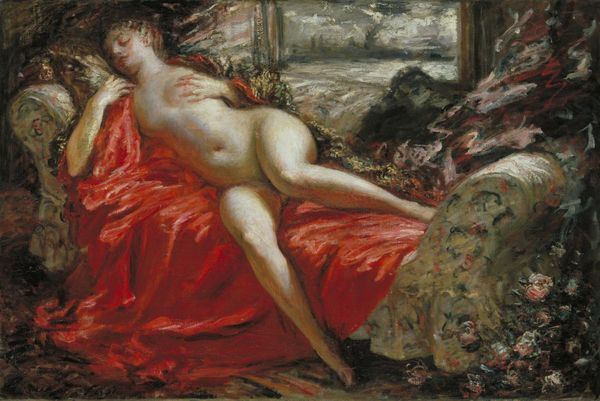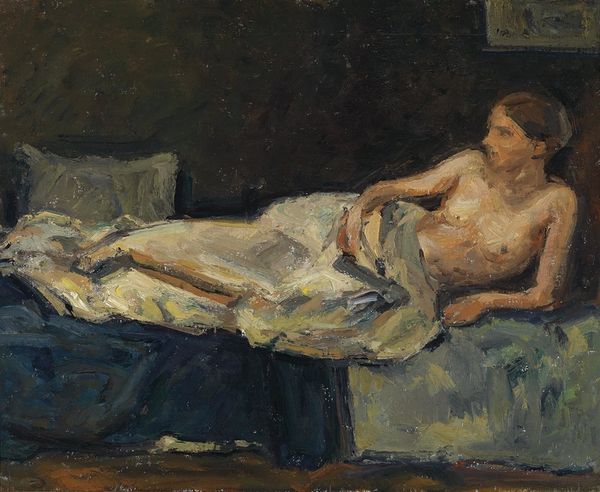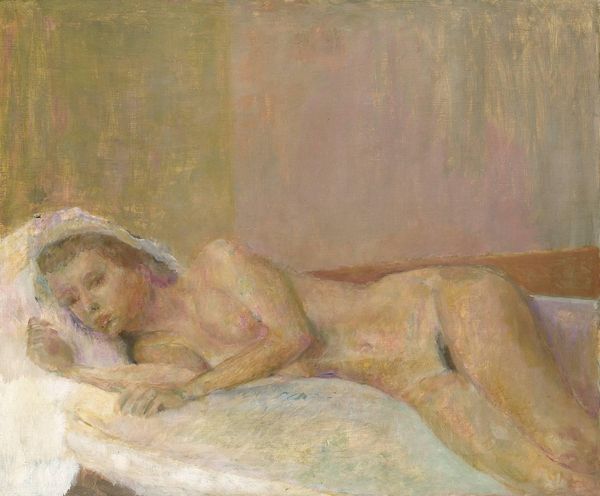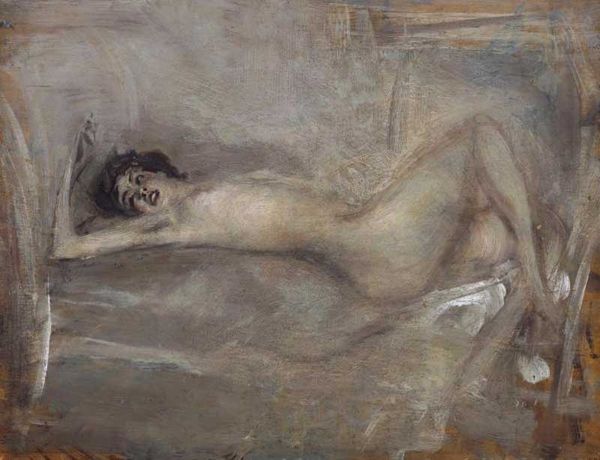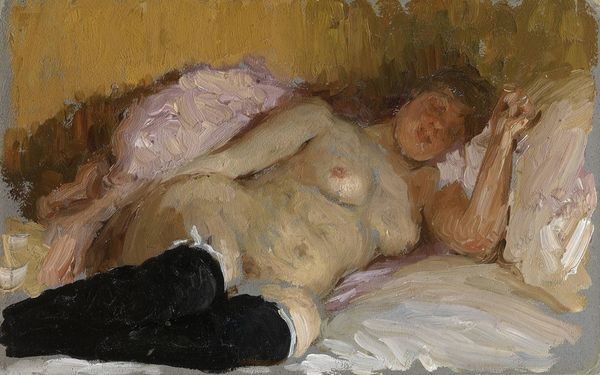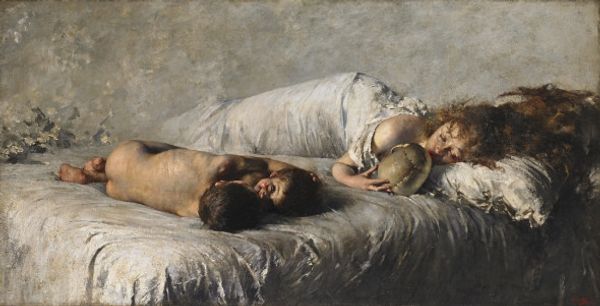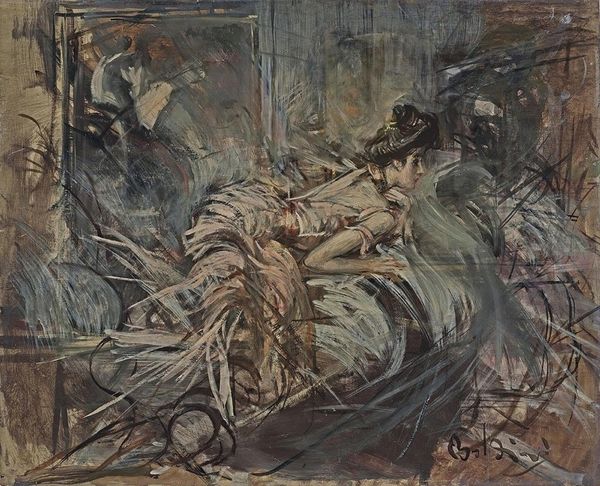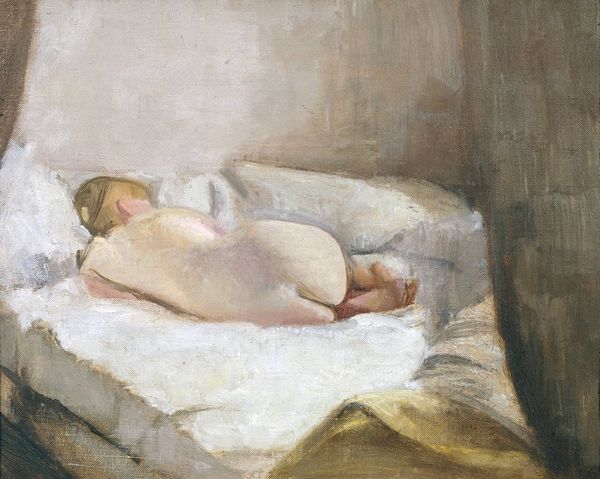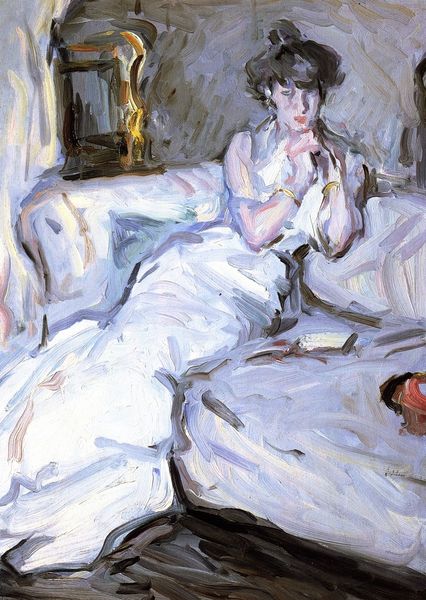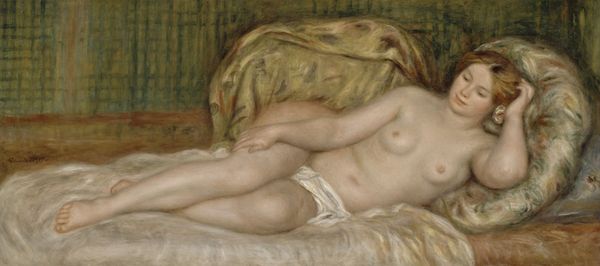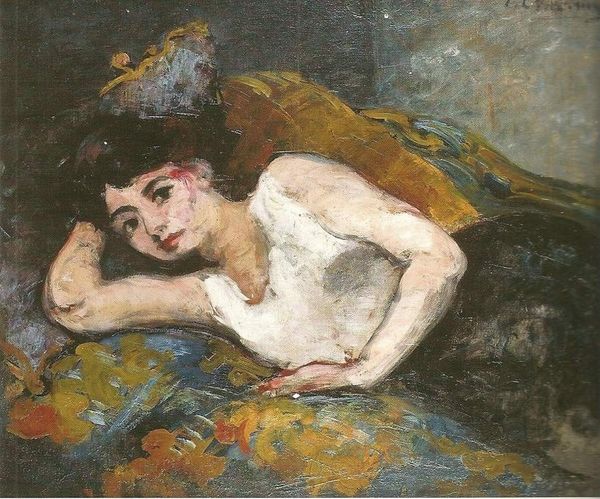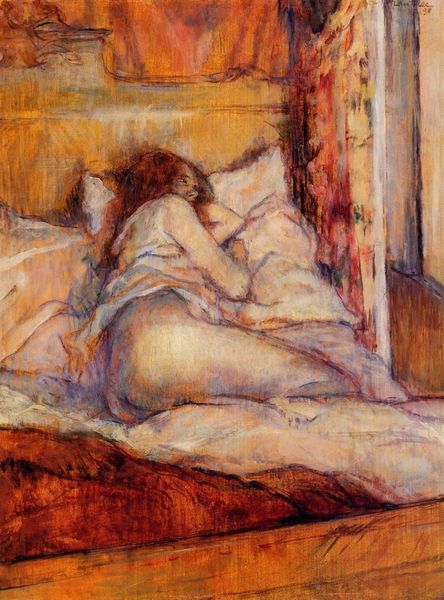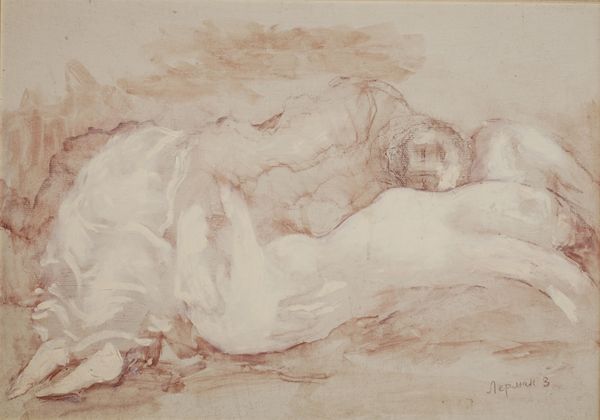
oil-paint, impasto
#
portrait
#
figurative
#
oil-paint
#
figuration
#
oil painting
#
impasto
#
romanticism
#
genre-painting
#
nude
Copyright: Public Domain: Artvee
Giovanni Boldini made this painting with oil on canvas, most likely in Paris. His loose brushwork and subject matter were influenced by Impressionism. But looking at it from a social point of view, it’s clear that the Belle Époque, or "beautiful era", was a moment of both opportunity and constraint for women. On the one hand, we see the rise of the "New Woman," who was more educated, independent, and sexually liberated than her Victorian predecessors. And yet, women were still largely confined to the domestic sphere, and their status was often tied to their beauty and desirability. This painting highlights the ambiguous position of women in society. Boldini has a reputation as a portraitist, and many contemporary viewers would have understood that women in paintings were often associated with ideas about luxury, leisure, and decoration, especially when they were presented as desirable objects for the male gaze. Historians use various resources to interpret art, from letters to newspaper articles. It shows that the meaning of a work of art is always tied to its historical and institutional context.
Comments
No comments
Be the first to comment and join the conversation on the ultimate creative platform.
